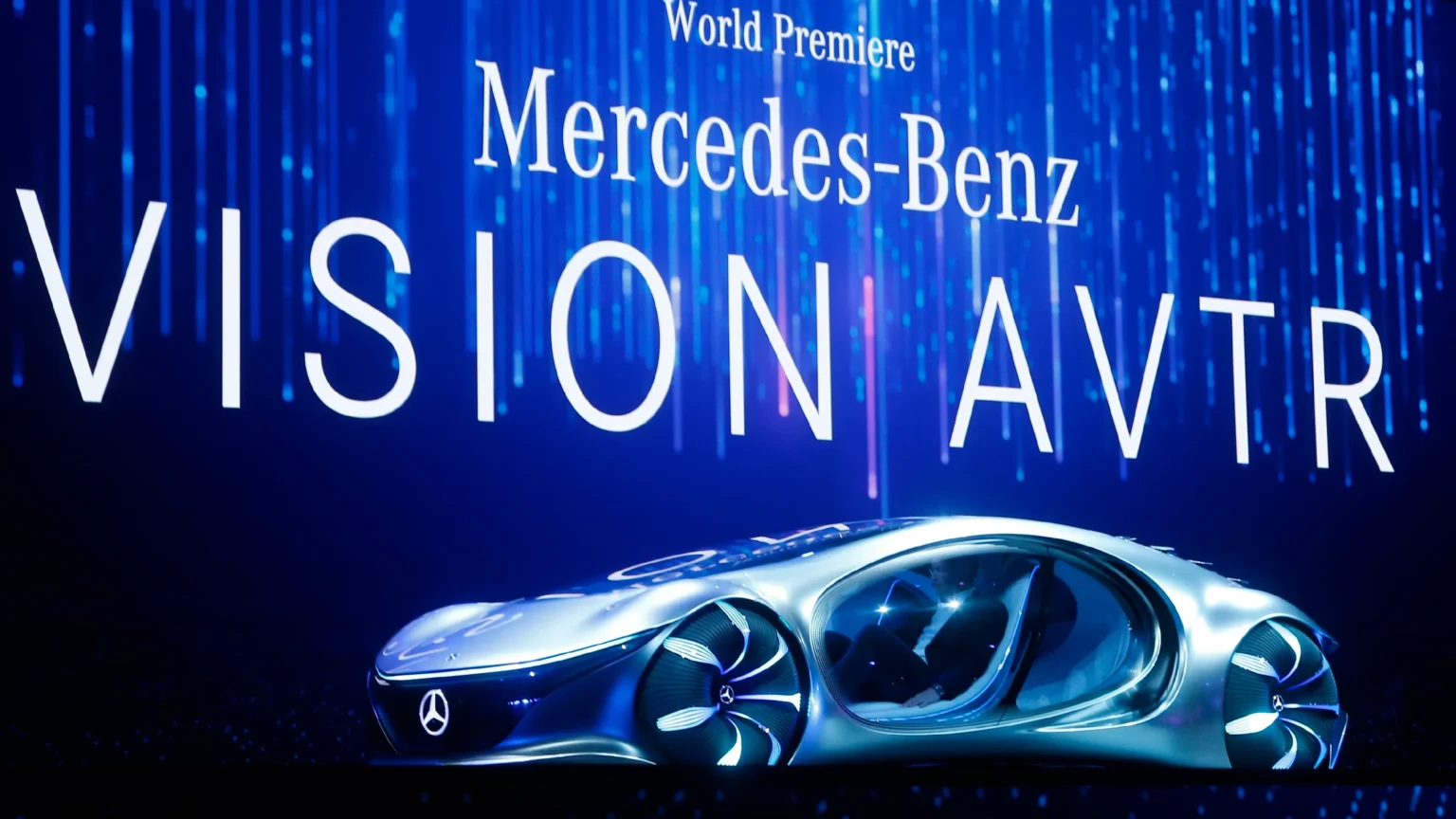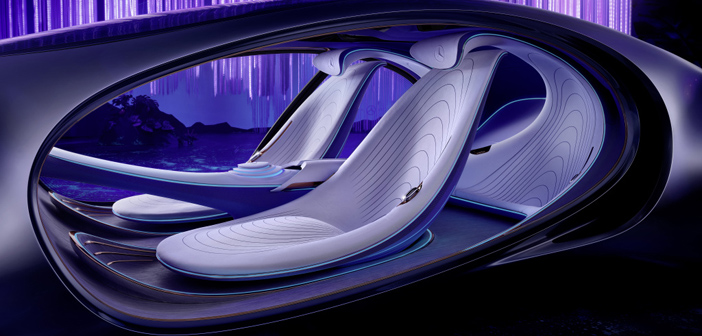Imagine a car that reads your pulse, has scales that breathe, and moves sideways like a crab. A car born from a collaboration with the creators of Avatar to showcase a future where machine and nature exist in harmony. This is the Mercedes-Benz Vision AVTR, one of the most breathtaking concept cars ever revealed.
Since its debut at CES 2020, a single question has echoed through the minds of automotive enthusiasts and tech futurists alike: “What is the Mercedes-Benz Vision AVTR’s price?”
The answer is both simple and profoundly complex: It is priceless because it is not for sale.
This article will delve deep into why this is the case, explore what a hypothetical price tag might look like based on its technology, and unpack why this concept is far more valuable as a vision of the future than as a commodity.
What is the Mercedes-Benz Vision AVTR? More Than a Car
Before we talk numbers, we must understand what the Vision AVTR represents. The name stands for “Advanced Vehicle Transformation,” a play on the film Avatar and the word “avatar,” meaning a manifestation of a concept or philosophy.
It is not a prototype for a production vehicle. It is a “vision,” a rolling sculpture and a technology demonstrator built to make a statement. Its purpose is to challenge conventions, showcase a sustainable and biomimetic design ethos, and preview technologies that might trickle down into future Mercedes-Benz models over the next two decades.
Key Philosophical and Design Pillars:
Biomimicry: The design is inspired by the natural world, specifically the fauna of Pandora from Avatar. Its exterior resembles a graceful, organic organism rather than a machine.
Symbiosis: The car is designed to function in harmony with its environment, using recycled and sustainable materials and a fully recyclable battery.
Bionic Interface: The car connects with the driver physically and emotionally, using biometric sensors to recognize them and their vital signs.

The Multimillion-Dollar Question: Estimating the “Un-Estimateable”
Since it’s a one-of-a-kind research and development project with no intention for production, Mercedes-Benz has never published a price. However, we can deconstruct its components to build a hypothetical—and staggering—valuation.
A conservative estimate for the Mercedes-Benz Vision AVTR’s research, development, and construction cost is well over $10 million, and it could easily be far higher.
Here’s a breakdown of where that value resides:
| Technology / Feature | Estimated R&D & Cost Contribution | Explanation |
|---|---|---|
| Revolutionary Battery Tech | $4M+ | Organic battery chemistry based on graphene, is fully recyclable and free of rare earth metals. This is pure, groundbreaking R&D. |
| “Biometric” Connection & UI | $2M+ | The ability to recognize the driver by their heartbeat and breath, with a immersive UI that projects interfaces onto the user’s hand. |
| Exotic, Sustainable Materials | $1.5M+ | Vegan interior with seats made from DINAMICA® microfibre (recycled PET) and floorings from fast-growing rattan vine. |
| “Bionic” 33″ Solar Roof | $1M+ | A roof that functions like a leaf, generating power through embedded solar cells. |
| 4 Independent Wheel Modules | $2M+ | Enabling crab-like sideways movement (30 degrees) and unprecedented maneuverability. Complex engineering. |
| Design & Sculpting | $1M+ | The cost of the world-class design team, clay modeling, and hand-building a perfect, functional one-off show car. |
| Total Hypothetical Value | ~$11.5 Million+ |
This figure doesn’t account for the intangible value of the intellectual property, the marketing impact, or the collaboration with Disney’s Avatar franchise.
Deep Dive: The Technologies That Make It “Priceless”
To understand why you can’t simply write a check for the Vision AVTR, you need to look at its technologies, most of which are years—if not decades—away from production.
1. The Biometric Connection System
This is the car’s most sci-fi feature. Instead of a traditional steering wheel, a multifunctional control pod rises from the center console. By placing your hand on it, the car authenticates you through your heartbeat and breathing pattern. The vehicle comes “alive,” and the entire interior illuminates in response to your presence. This isn’t just a gimmick; it’s a research project into how humans and machines can interact on a deeper, more intuitive level.
2. Organic Battery Technology
The Vision AVTR’s battery is its most significant technological promise. Unlike today’s lithium-ion batteries, it uses organic cell chemistry based on graphene.
Fully Recyclable: Completely free of rare, toxic, or expensive earth metals like nickel, cobalt, or lithium.
Exceptional Energy Density: Mercedes claimed a capacity of around 110 kWh with a incredibly compact size that allows for the unique, flexible seating layout.
Super-Fast Charging: A purported charging capability that could add hundreds of miles of range in less than 15 minutes.
This battery technology alone represents billions in potential future value, making the AVTR a testbed for a sustainable energy revolution.

3. Biomimetic Design and “Bionic” Materials
Every element is chosen for its sustainability and connection to nature:
The “Breathing” Scales: 33 bionic flaps on the back of the car are not just for show; they can communicate with the driver and the outside world through subtle movements, like the scales of a reptile.
360-Degree “Ava” Wheels: The wheels are integrated into the design and feature illuminated “spokes” that evoke the bioluminescence of Pandora.
Vegan, Circular Interior: There is no leather. Everything is made from recycled materials, showcasing a circular economy where waste is designed out.
The Real Value: A Glimpse into Mercedes-Benz’s Future
So, if you can’t buy it, what is the point? The value of the Vision AVTR is not in its resale price but in its function as a North Star for Mercedes-Benz.
A Design Language Preview: The flowing, organic shapes and seamless lighting elements have already begun influencing newer Mercedes-EQ models.
A Sustainability Mandate: It forces the entire company to think about sustainable material sourcing and circular production cycles, a principle now central to the brand’s “Ambition 2039” plan to become carbon neutral.
A Technology Pipeline: Research into advanced UI/UX, battery chemistry, and even the 4-wheel independent drive system will inform engineering decisions for years to come.

Conclusion: The True Cost of a Vision
Asking for the price of the Mercedes-Benz Vision AVTR is like asking for the price of the original Apple I computer or the Wright brothers’ Flyer. Its value is not transactional. It is foundational.
Its “price” is the immense investment in research and development required to push the boundaries of what is possible. Its “value” is the inspiration it provides and the concrete technologies it pioneers, which will eventually make their way into the cars we can drive.
It is a statement, a piece of performance art, and a crucial R&D project rolled into one breathtaking package. And that, truly, is priceless.
Your Next Step: While the Vision AVTR itself is off-limits, the philosophy behind it is already here. Explore the current Mercedes-EQ lineup to see how this vision of sustainable, luxurious electric mobility is becoming a reality today.



